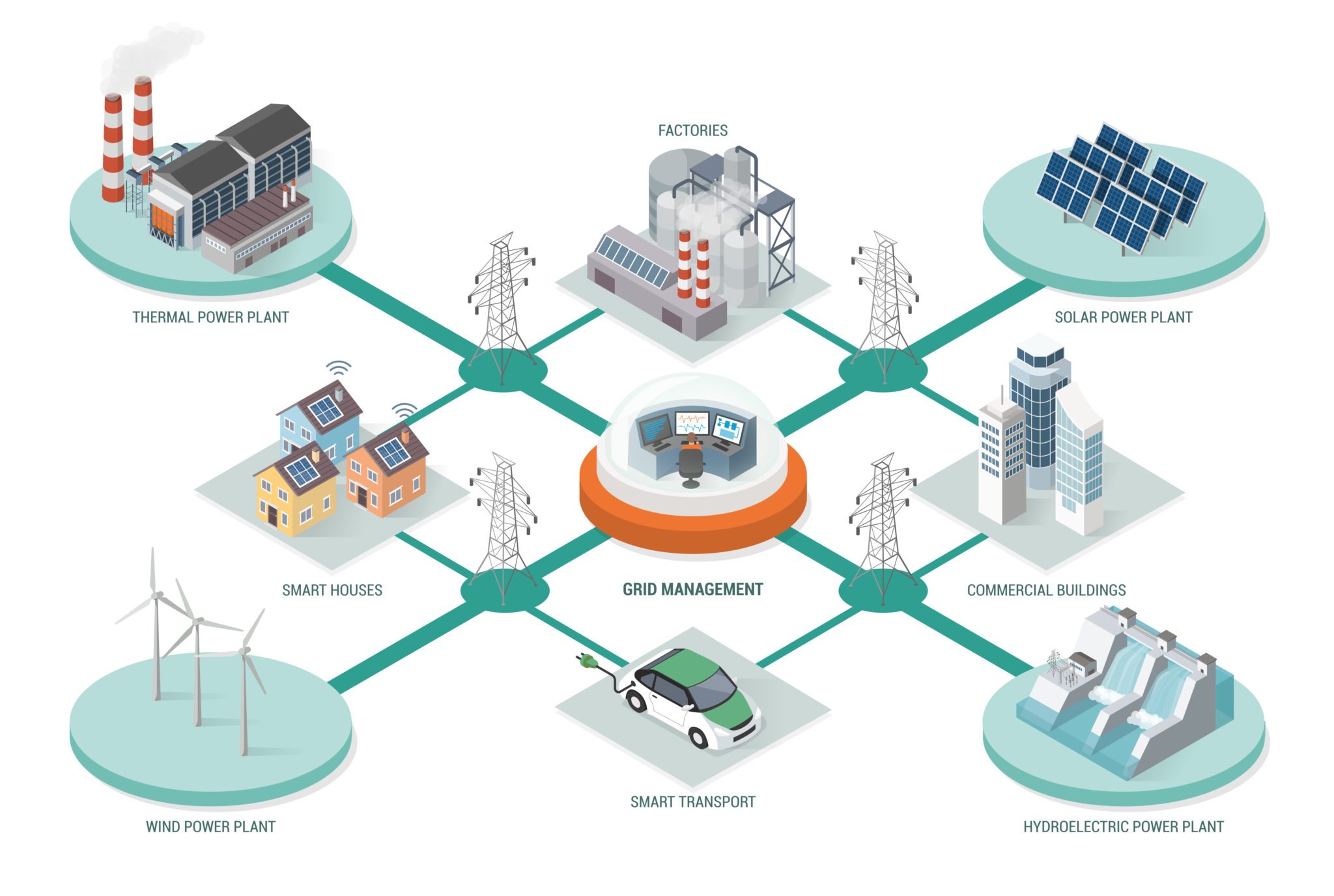 For electric utilities, it’s no longer just a game of generating and selling power, but rather one of balancing a complex grid by understanding the basics of utility load management.
For electric utilities, it’s no longer just a game of generating and selling power, but rather one of balancing a complex grid by understanding the basics of utility load management.
There are multiple electrical generation sources that tie into the grid today. Here are the major ones:
- Baseload power plants, such as coal-fired power plants, provide the minimum needed electricity.
- Peaking power plants, such as natural gas-fired power plants, meet fluctuating power needs (at peak energy usage times of the day).
- Renewables, such as hydropower, wind, biomass, solar and geothermal (not always reliable).
- Distributed generation sources give consumers the option to generate their own power through sources like rooftop solar and small wind turbines.
While this generation mix makes for a very complex electric grid, utilities must still supply reliable power and offer attractive packages to keep current customers and attract new ones. This is accomplished through utility load management.
What is utility load management?
Utility load management is the process of balancing the supply of electricity on the power grid by adjusting or controlling the electrical load rather than the power station output.
In short, utility load management helps utilities reduce demand for electricity during peak usage times (“peak shaving”), which can save utilities millions of dollars.
Utilities should partner with experts to design a utility load management system
The following bullets are among the many services utilities have access to when partnering with a supply chain expert to design their load management system:
- Customer enrollment
- Performance tracking
- Capacity forecasting
- Dispatch optimization
- Device installation scheduling
- Device asset management
- Work-order management of demand response devices
What to look for in a utility load management system
- Automation and data integration capabilities
- The ability to link multiple customer systems (meter data management, weather feeds, SCADA, advanced metering infrastructure, etc.)
- A system that avoids high peak demand pricing
Questions utilities should ask about the basics of utility load management
- Do we offer programs to our members that allow them to save on electricity costs if they participate in a utility load management program?
- What end-use appliances are we targeting for load reduction? (Ex. Electric water heaters, pool pumps, HVAC systems and electric vehicles)
- How soon after receiving a dispatch do we have to shed our load?
- How much load are we controlling at one time?
- Can we choose what loads are controlled?
- Do we need to verify that load was reduced during or after an event?
- Are there loads other than HVAC that need replacing or targeting for control?
Case study: An example of a great utility load management partner
Tantalus is a great example of a utility load management partner. The company’s measurement and verification capabilities can be used to better negotiate rebates and savings.
Check out these other services partners like Tantalus can provide:
- An energy management system that features consumer-friendly thermostats and load control switches to manage air conditioning, electric heating and other loads in demand response, energy efficiency and consumer engagement programs.
- Two-way functionality that helps utilities verify load is available and has been curtailed.
- The ability to manage control devices and dispatch control signals over cellular and other networks.
- The opportunity to inform consumers of events, constraints and opportunities to participate in utility programs.
- A chance to leverage and augment a utility’s advanced metering infrastructure (AMI) investment, deliver optimal connectivity and results for utilities, and provide benefits to consumers on behalf of their utilities.
Related posts
Utility supply chain management | 4 procurement tips for electric companies
Distributor storm stock a game-changer in utility disaster recovery